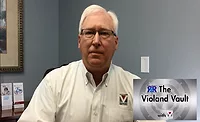Ask, Don't Tell: Strategies for Taking Sales to the Next Level

In the restoration industry, success in sales is based on building trust and establishing credibility. When selling any service, the prospective customer has only your relationship, the information you provide, and the inputs and evaluations from others on which to base their choice of vendor. Effectively building trust is the most critical skill your business development people must master.
The selling strategy I have found most successful is to build that trust and credibility on the platform of positioning your company, and yourself as the sales or business development professional, as a partner; a resource that can help the customer achieve their goals. This is a partnership that goes well beyond simply providing your services when they are needed. When fully embraced, you’ll find this method is significantly more successful and built on a deeper relationship with the customer than the “find their pain” approach popularized in the 1990s.
When you first meet with a prospect, your goals are twofold: come to understand their goals and needs, and build your credibility. The majority of sales people try to accomplish these goals by telling—describing your company, your services or products, and the uniqueness of your offerings. We try to talk the prospects into believing how great we are. This approach typically comes across as cocky or ego-driven and may be received as a heavy-handed sales pitch.
The best meetings with prospective customers are those where the sales person isn’t talking. Why is that, you ask? Because if the seller isn’t talking, the prospect is the one speaking. When prospects talk, they help the sales person understand their expectations in terms of product or service features, responsiveness, vendor capabilities, and training opportunities. When appropriate questions are used, you will also learn what their business goals are and the areas on which they are focused for performance improvement. Listening to what your prospects have to say helps you better understand them and prepares you to explain how your company can do a better job of addressing their needs than your competition. These are your differences. The selling that then takes place is you describing how you can partner with the prospect to help them achieve their objectives and make their business more successful.

When you first meet with a prospect, your goals are twofold: come to understand their goals and needs, and build your credibility.
Listening also builds trust.
Strong, credibility-building questions are the best way to display your competence. These are questions that demonstrate your experience, while encouraging the prospect to talk about their issues. It requires advance research and planning to develop good, powerful questions, but once you have invested the time and come up with the right ones, you can use them across the range of customers and prospects in the market segments on which you are focused.
For example, when meeting with prospects in the property management field, you might pose the following: “As I look at my other customers across the industry I find they are extremely focused on developing the ability to create a profile of their best, long-term tenants so they can identify and attract others like them. Is that part of your business strategy, and how would you characterize your efforts?”
Your second essential objective is to understand your prospect’s issues. Every executive has an agenda of business goals, needs, or priorities. Your mission is to explore, understand, and add value to their agenda. When you can connect with and support a higher-level goal, you get closer to becoming a trusted advisor. If you remain focused on tactical needs, you are just an expert-for-hire, susceptible to becoming a commodity.
Where appropriate, you may leverage statements made by their company leaders, such as: “Your CEO’s speech to last month’s industry conference sure made clear his vision regarding your company’s growth aspirations. How will that affect your particular area?” This is a way to explore the prospect’s issues while demonstrating your knowledge, experience, and preparation for the meeting.
Other questions designed to better understand your prospect’s agenda include:
- What organizational capabilities do you need to strengthen in order to support your business strategy?
- To achieve your goals, is there anything you need to deemphasize or stop doing?
- If you had additional resources, in which opportunities or areas would you invest them?
In an early meeting with a prospect, these questions help you to add value by helping them think differently about their issues and challenges.
Let’s go back to “your differences” that I mentioned a bit earlier. One of the statements you will frequently hear from a prospective restoration customer or referral source is: “We are already working with/using/referring ABC Restoration.” Your response should be what Jeffrey Fox calls “Killer Sales Question #3” in his book How to Become a Rainmaker. “Yes, that’s a good company, would you like to know our points of difference?” These points of difference, which you should be fully prepared to explain, provide the prospect with the information they need to support a decision to begin working with you.
Never Stop Asking
Once you have acquired a new customer your challenge is to deepen the relationship by better understanding them and providing insights into the issues they are facing. Here are some simple phrases that can be powerful tools for getting to the root of their position:
- Tell me more about that.
- What do you mean by that?
- How so?
These phrases not only help you to probe for additional information, they are also an excellent tool to keep your customer talking, allowing you additional time to formulate a response or to decide in which direction you want to take the conversation.
It is also important to have questions in your arsenal that will help you to effectively learn more about customers you already serve, thereby deepening the relationship. One approach is to ask: “Which parts of your job do you wish you could spend more time on, and which do you wish you could spend less?” The response to this question not only helps you understand where your customer’s passions lie, but may identify opportunities for your company to provide resources or other services that help with the aspects of their work they do not find fulfilling or meaningful.
Doing your research and preparing strong questions to be used early on with prospects will clearly separate you and your company, providing a strong differentiator from your competitors. Once you have built trust and obtained a new customer, additional questions will help ensure that you understand and are providing value to their most-critical items, allowing you to deepen your relationship and foster a long-term partnership that will generate consistent streams of revenue for you and value for your customers. Just remember to “ask, don’t tell.”
Looking for a reprint of this article?
From high-res PDFs to custom plaques, order your copy today!



